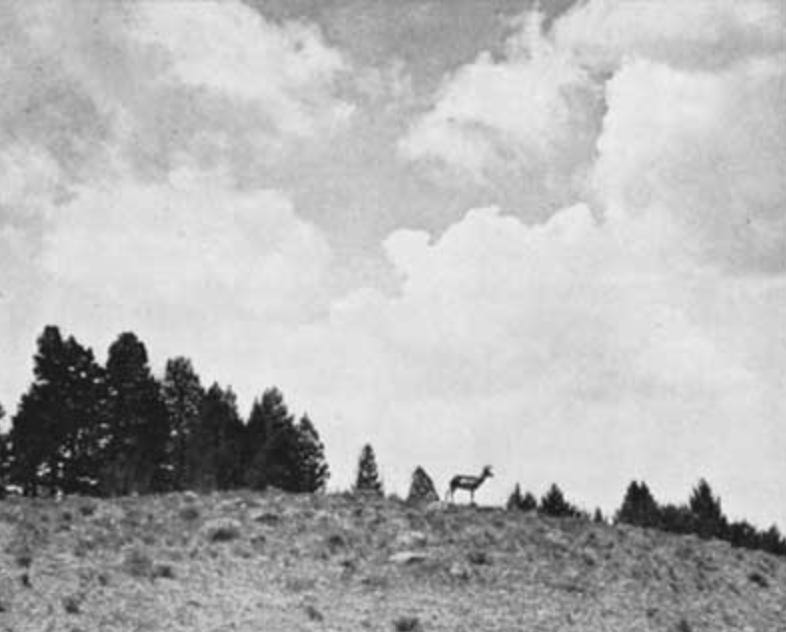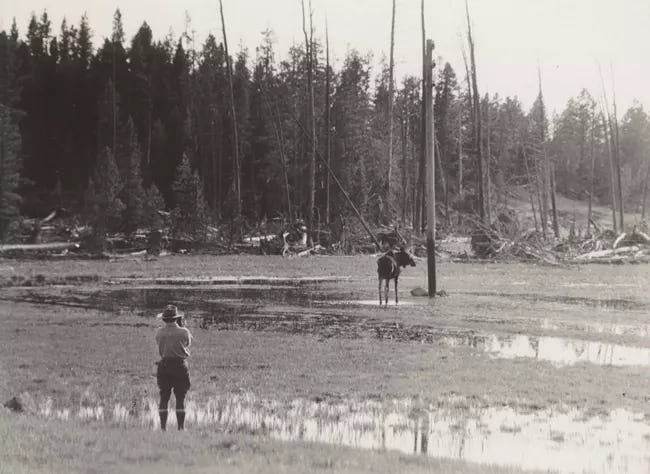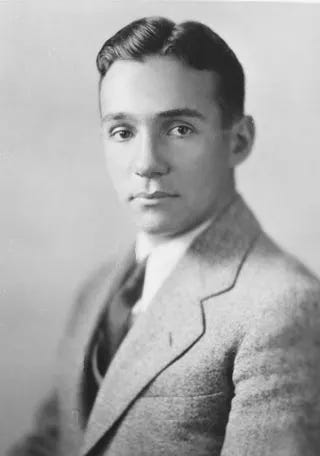George Wright on a Brief Alternative Path
Considering a blip in National Park Service wildlife history
During the depths of the Great Depression, in 1936, two National Park Service employees were traveling west from Texas’s Big Bend National Park toward Tucson. Their automobile collided with another. The passenger died immediately. The next morning the driver, George Melendez Wright, died, only 31 one years old. A small man — only 5 foot 4 inches — Wright’s short life had a big, if temporary, impact on the National Park Service and its wildlife policy.
Too few people know of Wright, so I’m using The Classroom to share a bit about him and his context. Read on!
Backgrounds: Wright and Early Park Service
Wright led a privileged, but tragic, life. His mother was from a large and powerful El Salvadoran family and died when he was two; his father came from a wealthy San Francisco-area shipping family and died when Wright was eight.1
Precocious, Wright entered the University of California at Berkeley at 16 and soon fell under the influence of zoologist Joseph Grinnell, a leading scientist. Grinnell pushed the idea that habitat offered a critical part of wildlife survival (as opposed to just stopping hunting and other exploitation).
Wright assisted Grinnell in the field on his way to becoming an accomplished scientist himself. Wright’s training came at a transitional point in the history of ecology and natural resource management.
The National Park Service, established in 1916, began with what is sometimes called a dual mandate, or even dueling mandates. Its mission called on it to conserve its parks “unimpaired” and promote enjoyment for the public. Early on, for all sorts of rational reasons, the agency focused on giving the public what it wanted. And in the 1920s, park visitors (and hunters who lived outside parks) wanted big wildlife like deer, elk, and antelope. They (along with nearby ranchers) did not want wolves, cougars, or coyotes. Consequently, the NPS practiced predator control. Keeping predators at bay in the parks, including hunters, ensured the park-visiting public would find a heritage of abundant wildlife, so went agency thinking. Controlling predators would guarantee animals thrived in a large “natural” park.
The logic seemed unassailable. Yellowstone, of course, included a few roads, hotels, and campgrounds, but it was well over two million acres. The artifacts of “civilization” were confined to small pockets and strips. NPS Director Horace Albright saw Yellowstone as a huge, pristine park.
But wildlife biologists like Grinnell and Wright disagreed. They saw that Yellowstone — and all the parks — were too compromised, too small, and embedded in wider habitats that were governed by different management priorities and land uses.
Making Fauna No. 1
Like many other Grinnell students, Wright headed off to NPS employment after graduation. At the time, the agency invested little in science and routinely made policy decisions without consulting (mostly nonexistent) scientific studies.
Wright wanted to change that for wildlife.
Wright’s personal fortune allowed him to propose a large-scale field survey of wildlife in the parks. Only because it was self-funded did Director Albright allow it to proceed, although he genuinely blessed the enterprise and wrote to park superintendents and hotel managers telling them to help out Wright and two friends, Ben Thompson and Joseph S. Dixon.
They transformed a new Buick Roadster into a research vehicle and headed out in May 1930, as the Depression cast an oppressive and worsening pall over the continent. According to Thompson, Wright had a “gift of . . . character” that made it easy for people to open up and sharing information, even if their interests were not compatible.
The three-man team circled the West and set to work on a report, something that took another two years to complete. When Fauna of the National Parks of the United States appeared in 1933, it provided the first reasonably complete survey of wildlife in the park system. (It inaugurated a short-lived series of reports, hence its common name, Fauna No. 1.) For the survey alone, it would have been a significant document.
But Wright and his colleagues went further with recommendations, which included promoting science within the agency as the “foundation” of management and expanding park boundaries so they were large enough to maintain wildlife populations and all their “biotic relationships” so they might “be left to carry on its struggle for existence unaided.” Winter feeding, predator control, and other human interference would be significantly limited if this recommendation were made policy. The report even called for restoring species that had been removed from parks.
Fauna No. 1 was potentially revolutionary.

Stalled Progress and the Importance of Wright
One of the best historians of the National Park Service, Richard West Sellars, argued Fauna No. 1 highlighted the “unimpaired” part of the agency’s mission and brought to the fore the tension between managing for aesthetics and ecology. It was a transformative document.
Research reserves were established in parks and a new division for wildlife research in the agency. The NPS began moving along an alternative path, much more informed by science and data. Then, an automobile accident outside Deming, New Mexico, crashed the program. By the end of the 1930s, the newly hired wildlife biologists were transferred out of the agency and the promise of change was deferred to another decade.
My reading of history tends to see it flowing like a big river. In such a stream, a small obstacle rarely can divert the entire watercourse. Yet Wright served as such an obstruction, temporarily diverting the flow of NPS policy. Sometimes, influential individuals make a difference — and in something as seemingly incapable of change as a government bureaucracy!
Closing Words
Relevant Reruns
I wrote here about elk, which became arguably the most notorious wildlife problem for the NPS. The George Wright Society published The George Wright Forum for years, bringing to life studies and stories about parks and other protected lands. I contributed an essay there once, which summarizes much of my second book.
New Writing
I have no new writing to share; however, I recently received recognition for three stories I wrote for the local weekly paper around here. I won one second-price award and two third-prize awards for stories I wrote last year for the La Conner Weekly News. You can re-read the pieces here and here and here.
As always, you can find my books, and books where some of my work is included, at my Bookshop affiliate page (where, if you order, I get a small benefit).
Taking Bearings Next Week
It is time for The Field Trip next week. Stay tuned!
For nearly 40 years, the George Wright Society published the George Wright Forum as a place to consider park issues. On its 20th anniversary, it published an issue mainly focused on Wright and his legacy. Much of my information comes from that issue, found here. There is a relatively new biography of Wright that I learned of while preparing this newsletter but haven’t read yet; Jerry Emory, George Meléndez Wright: The Fight for Wildlife and Wilderness in the National Parks (Chicago: University of Chicago Press, 2023).







I knew a bit about Wright's impact on NPS wildlife management/conservation but not that he died so young. Thanks for this piece.
Great piece-- I had not heard of Wright until some point in the 1990s, when I was working on park history and ran into someone who either knew him personally or was once-removed (I can't recall the details!). He encouraged me to join the George Wright Society, which was maybe 15 years old at the time (see https://www.georgewrightsociety.org/about-us). Other than their work, it was fairly challenging to find much about him beyond brief bios; the new biography by Jerry Emory is a good read and a welcome addition to park/environmental history for sure!